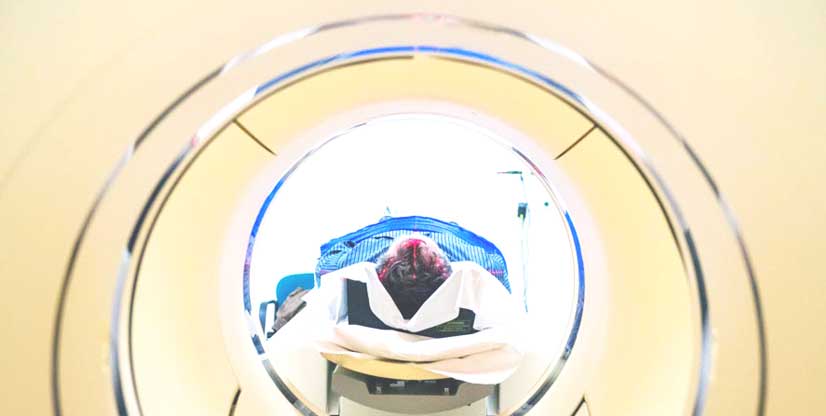Clinics & services
Diagnosing brain, spinal cord, nerve & muscle disorders
For health professionals
- Home
- Clinics & services
- Scans & tests
- Diagnosing brain, nerve & muscle disorders
- For health professionals
Doppler ultrasound
Outpatient Doppler ultrasound services are provided for investigation of cerebrovascular disturbances, including stroke, with the use of a non-invasive procedure.
Electroencephalography (EEG)
Electroencephalography records the electrical activity of the brain. Its is useful for the investigation and management of choice for patients suspected of suffering from epilepsy and other neurological dysfunction.
First Seizure Clinic
A specialised service is provided for patients who have recently had their first ever seizure. The EEG test is most helpful if performed within 24 hours of the seizure, although there is still value, if this is not feasible, in performing it later. Appointment information is given to each patient about the First Seizure Clinic at the Heidelberg Repatriation Hospital where the patient is seen by a neurologist/epileptologist.
If you wish to refer for a first seizure EEG from another hospital, the Austin Epilepsy registrar must first be contacted through switchboard on 03 9496 5000 to discuss the timing of the EEG and attendance at the clinic.
Routine EEG
A routine EEG takes approximately 45 minutes to perform. Electrodes will be applied to your patient's head to record EEG. Video will also be recorded to monitor any clinical seizure.
Sleep deprived EEG
A patient may be referred for sleep deprivation test if the initial EEG is negative. An EEG performed after a night of sleep deprivation may increase the ‘pick up' rate to support a diagnosis of epilepsy.
Day monitoring EEG
This service is to diagnose or quantify events that occur at least a few times per day. It may be useful to diagnose brief staring spells where epilepsy is suspected or to help determine if someone with known absences may be safe to drive.
Long term EEG monitoring
Long term EEG monitoring is an inpatient EEG service designed to cater for 2 situations:
- A patient is suspected of having epilepsy with frequent events. However, the routine or sleep deprived EEG tests have been normal. A period of video EEG monitoring over several days is performed in the hope of capturing an event to determine whether the cause is epilepsy or not.
- A patient continues to have seizures despite anticonvulsant treatment. A prolonged period of video-EEG monitoring over several days is performed in the hope of capturing seizures. This is used to determine whether the cause is focal or generalised epilepsy and whether or not the patient may be a candidate for epilepsy surgery to remove the seizure focus.
Patients require a referral for a consultation with an Austin Health neurology consultant before thay can undergo long-term EEG monitoring.
Electromyography & Nerve Conduction studies (EMG/NCS)
EMG/NCS are performed to check overall integrity of nerves and muscles. This test remains the best initial test for the diagnosis of peripheral nerve and muscle disorders.
Common entities diagnosed using this test include nerve entrapments (carpal tunnel syndrome, ulnar nerve lesion at the elbow), nerve root compression due to herniated lumbar or cervical disc, peripheral neuropathy and muscle disorders such as muscular dystrophy, polymyositis and vasculitis.
Transcranial magnetic stimulation (TMS)
Transcranial magnetic stimulation or TMS is a neurophysiologic technique that allows the induction of a current in the brain using a magnetic field to pass the scalp and the skull safely and painlessly.
TMS is useful investigating tool to know the excilibility of cortex (brain).
Evoked Potential
Evoked potential studies are designed to aid in the diagnosis of problems involving the central nervous system affecting sensation, vision or hearing.
Brainstem auditory evoked potential (BAEP)
A BAEP study measures the function of the auditory pathways from ear to the brain. An external stimulus is given in the form of click noise to elicit responses.
Visual evoked potential (VEP)
A VEP study measures the function of optic pathway from eye to the brain to assess any damage or blocks. One eye at a time is stimulated by checker board pattern to evoke responses.
Intraoperative Monitoring (IOM)
Specialised procedures are performed in operation theatre to assess the nerve and fiber integrity during surgery.
Peripheral nerve stimulation
Monitoring of peripheral nerve stimulation during surgery helps to assess the integrity of nerve, roots, plexus and cords. This helps surgeons to determine their approach.
Somatosensory evoked potential
Monitoring of somatosensory pathways during scoliosis surgery helps to prevent any reversible damage to the spinal cord.
Intracerebral ECoG
This procedure is done for prospective candidates for epileptic surgery. Patient should have a long term monitoring beforehand to localise a lesion. A special grid is placed on the brain directly to further locate the lesion and this data is then analysed by an expert team of neurologists.


